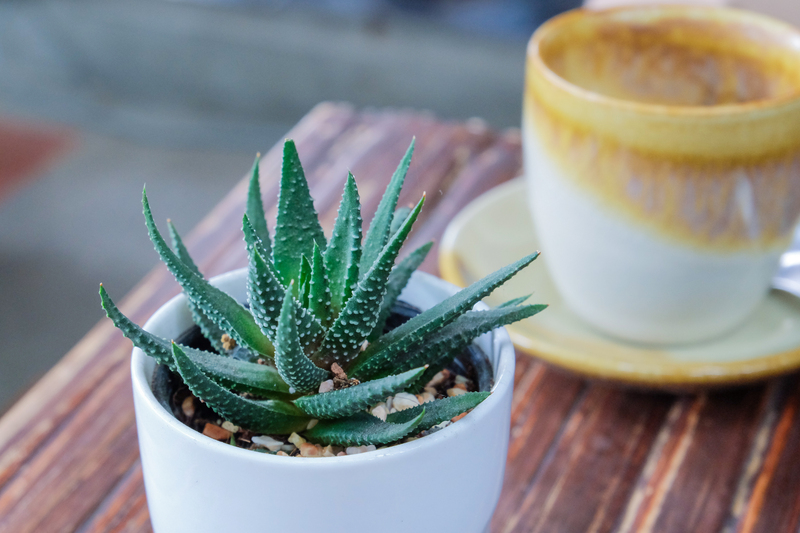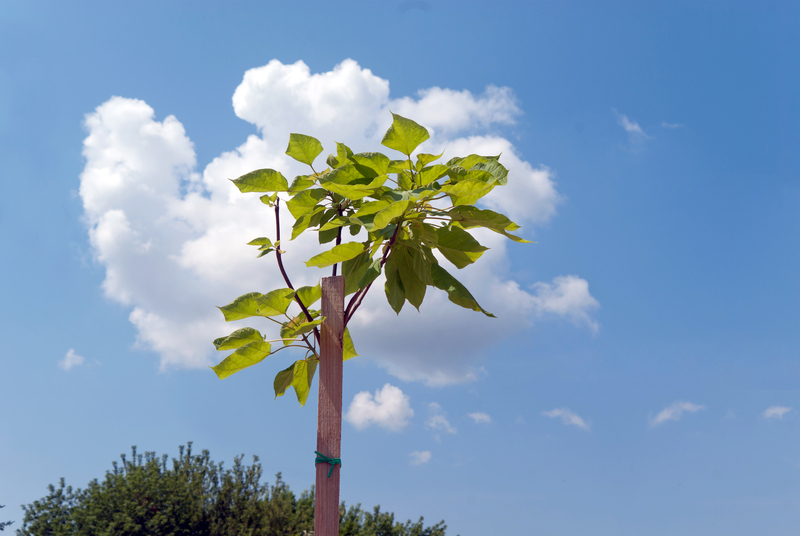Innovating a Kid-Centric Green Space at Home
Posted on 10/06/2025
Innovating a Kid-Centric Green Space at Home: A Comprehensive Guide
In a fast-paced and digitally dominated world, creating green spaces at home for kids has become more crucial than ever. Not only do these natural havens offer countless opportunities for imaginative play, but they also foster environmental stewardship and healthy living from a young age. If you're considering innovating a kid-friendly green area in your house or backyard, this immersive guide provides practical advice, creative concepts, and design strategies for the ultimate child-centric green space.

Why Prioritize a Kid-Centric Green Space?
A child-centric green zone goes beyond mere aesthetics. These dedicated spaces embed the wonders of nature into your child's daily life, providing a sensory-rich environment for exploration, relaxation, and growth. Here are the principal reasons families opt for a kid-friendly eco-space at home:
- Physical Health: Outdoor play encourages movement, improving strength, flexibility, and coordination.
- Emotional Wellbeing: Nature helps reduce stress, boost mood, and enhances creativity.
- Environmental Awareness: Kids develop empathy for living things, learning about sustainability and ecosystem balance.
- Bonding Opportunities: Families connect as they plant, play, and create together.
- Learning & Discovery: A garden is a living classroom, sparking curiosity and scientific thinking.
Key Elements of an Innovative Kid-Centric Green Area
Designing a green play space at home tailored for children involves attention to safety, fun, and ecological value. Consider integrating these essential components:
1. Safe and Sustainable Materials
- Opt for non-toxic, durable, and sustainable building materials, like bamboo decking, recycled rubber, or untreated wood.
- Ensure surfaces are soft with grass, moss, or artificial turf to cushion accidental falls.
- Use natural barriers, such as hedges or living willow structures, instead of hard fences for added safety and biodiversity.
2. Age-Responsive Design
- Toddler Zones: Focus on tactile elements, gentle slopes, and shaded areas for crawling or soft play.
- School Age Kids: Add climbing frames, sandpits, or interactive planters they can maintain.
- Tween/Teens: Incorporate privacy nooks, hammocks, and DIY gardening stations for autonomy and self-expression.
3. Nature-Inspired Play Structures
- Treehouses or platform forts constructed using eco-centric practices.
- Water features, such as mini streams or fountains, using recycled water systems.
- Natural climbing obstacles like boulders, logs, and stepping stones.
- Living tunnels made from fast-growing vines or plant arches.
4. Multi-Sensory Planting
- Plant a sensory garden filled with aromatic herbs (lavender, mint), touch-friendly plants (lamb's ear), and colorful flowers.
- Install raised vegetable or fruit beds for hands-on learning about food growth cycles.
- Encourage pollinator habitats with native wildflowers to attract butterflies and bees.
5. Zones for Rest, Reflection, and Creativity
- Design quiet corners with benches, swings, or seating circles under leafy canopies.
- Create outdoor art areas with chalkboard walls, nature craft tables, or mud kitchens.
- Include open space for yoga, reading, or stargazing at night.
Innovative Ideas to Craft an Engaging Home Green Space for Kids
1. Upcycling and Eco-Art Projects
Engage your child's creativity with upcycled garden crafts. Turn old rain boots into vibrant planters, paint rocks as plant markers, or build a bug hotel using discarded wood. These projects not only beautify the space but also teach valuable lessons about repurposing and caring for the planet.
2. Edible Landscapes
Why not combine play with nutrition? Establish child-friendly edible gardens featuring cherry tomatoes, strawberries, or snap peas. Kids delight in picking and tasting the fruits of their labor, and you can introduce concepts of organic growing and nutrition from an early age.
3. Wildlife Havens
Attract local wildlife by installing birdhouses, butterfly feeders, and small ponds. Observing critters becomes a daily adventure, and children learn to respect the interconnectedness of life. Planting a diversity of native plants further supports these habitats and encourages healthy ecosystems.
4. DIY Mini Greenhouses
Construct a miniature greenhouse using clear plastic bottles or an old windowpane frame. Kids can experiment with growing seeds year-round, observe sprouting, and record growth in a garden journal. This approach makes science hands-on and accessible right in the backyard.
5. Themed Activity Trails
Design a nature trail that winds through your green space, with activity stations: sensory touchpoints, simple obstacle courses, observation posts, and scavenger hunt clues. This interactive layout keeps the area dynamic and encourages regular outdoor play.
Prioritizing Safety in a Kid-Focused Green Environment
- Check plant toxicity: Always research and avoid poisonous or irritant plants (e.g., oleander, foxglove).
- Avoid sharp or pointed features: Smooth over hardscape edges and avoid metal or glass near play areas.
- Secure water features: Ensure ponds or streams are shallow and supervised. Always fence off or cover water when not in use.
- Maintain visibility: Trim tall foliage that could block sightlines--keep children in view from the home or patio.
- Practice eco-friendly pest control: Use natural repellents and companion planting instead of chemicals.
Accessible Design for All Abilities
If your family includes children with special needs, ensure the green space supports accessible pathways, sensory stations suited to varying abilities, and adaptive gardening tools. Raised beds and smooth, wide trails are great for wheelchair access too.
Encouraging Ongoing Engagement: Making Green Spaces Part of Family Life
The effectiveness of a kid-centric green zone at home isn't just in its initial design, but in how consistently your family uses and cherishes it. Here are tips for ongoing engagement:
- Rotate play structures, art supplies, or garden themes seasonally to maintain novelty.
- Host regular garden days for planting, harvesting, cleaning, and crafting.
- Celebrate milestones--first tomato, new butterfly visit, or harvest festival--to build lasting positive associations.
- Let kids take the lead: assign them their own patch or give them choices about what to plant or build next.
Eco-Education: Teaching Sustainability and respect for nature
Every element of your innovative kid-focused green area can serve as an experiential learning opportunity:
- Discuss composting and recycling as part of maintaining the green space.
- Use rain barrels to demonstrate water conservation.
- Introduce basic botany, soil health, and environmental cycles.
- Encourage kids to journal about their observations or participate in citizen science projects.
Low-Maintenance Solutions for Busy Families
Not everyone has hours to spare on gardening. Luckily, low-maintenance kid-friendly green spaces are possible:
- Install automatic irrigation or use self-watering planters.
- Choose hardy native plants that thrive with minimal attention.
- Use mulch and ground cover to suppress weeds.
- Keep design modular--moveable planters or play features can evolve as kids grow.

Maximizing Small Spaces: Urban and Indoor Green Zones
Urban families can still nurture kid-centric mini green spaces on balconies, rooftops, or inside apartments:
- Vertical Gardens: Use wall-mounted planting pockets or stacking containers.
- Window Boxes: Grow herbs or edible flowers in accessible window gardens.
- Tabletop Terrariums: Let kids craft tiny plant worlds indoors.
- Compact Play Mats: Lay down green-themed mats with textured, removable plant pots for easy sensory play.
Get creative with lighting, mirrors, and reflective materials to amplify greenery and make the space feel lush even in small quarters.
Final Thoughts: The Lasting Impact of Kid-Centric Green Spaces
An innovative green space designed for kids at home is more than a trendy feature. It's a powerful investment in childhood joy, family bonds, and lifelong environmental mindfulness. By blending safety, creativity, sustainability, and accessibility, you're not just making a fun garden--you're planting seeds of wonder and stewardship that will flourish for years to come.
Ready to transform your home's green spaces? Involve your children every step of the way and watch as their relationship with nature--and with each other--blossoms in unexpected, delightful ways.
Let Your Green Adventure Begin!
- Start small--even a windowsill or tiny patch can become a magical kid-centric green spot.
- Be adaptable--transform and tweak as your family's interests change and kids grow.
- Above all, have fun! The journey toward a greener, child-focused home is as important as the final outcome.
By embracing these strategies and ideas, your home can seamlessly become a haven where nature and childhood thrive together.

